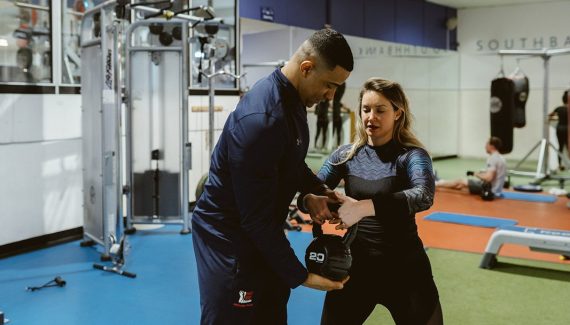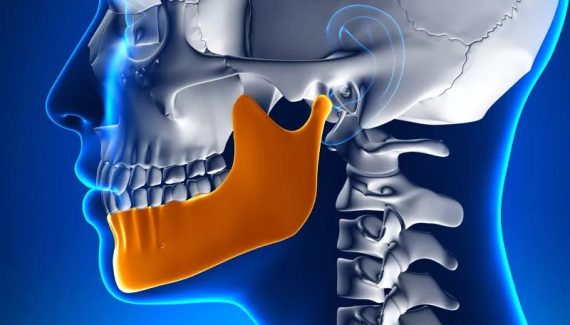In recent years, universities and colleges throughout the US have reportedly been attempting to create safe environments for students who are recovering from addiction, and there are currently 140 recovery programs available for college students in the US.
These recovery programs provide students with the tools, resources, and support that they need to overcome addiction while also continuing with their studies, meaning that they can help to potentially minimize the interruption to academic studies.

Image Source: arrowpassage
In April 2022, the US government outlined several commitments it is attempting to meet as part of its National Drug Control Strategy, and this included its desire to increase the number of collegiate recovery programs by at least 25% by the year 2025.
Contents
Why Is There A Need For More Adequate Recovery Programs For College Students?
According to data collected by SAMHSA (Substance Abuse and Mental Health Services Administration) as part of their 2020 National Survey on Drug Use and Health, it was found that the age group that had the highest percentage of substance use disorders was the 18-25 demographic. Moreover, this represented 24% of a sample size of 8.2 million people.
Additionally, research featured in the Journal of the American Medical Association earlier this year revealed that drug overdose-related deaths increased by 94% from 2019 to 2020 in the 14-18 demographic.
There is a need for better recovery programs for college students because of the increasing number of substance use disorders among this demographic, which is increasing despite the government’s efforts to introduce collegiate recovery programs.
Moreover, the research illustrates the clear need for improved recovery programs that can help students effectively overcome addiction, and to prevent overdoses. In addition, the teenage statistics make it clear that the issue can begin before students reach college age, and therefore, better forms of treatment are needed to help the younger population in general.
Covid’s Effect On Collegiate Recovery Programs
A major reason for the increase in substance use disorders is the Covid-19 pandemic. During the beginning of the pandemic, many universities had to close their campuses, which in turn meant that college recovery programs were impacted.
Students who might have previously been taking part in these recovery programs were now suddenly not able to access certain features of the programs (and what was accessible was only available online, e.g., counseling sessions).
Since many of these programs involved group sessions, students were restricted in their ability to connect with each other and share their progress with their recovery journeys. Moreover, there was also the issue of online security presented by using online software such as Zoom, since they can be hacked, and therefore, students did not have a guarantee of safety and security.
The likelihood of college students relapsing as a result of not being able to access support services via these collegiate recovery programs would have played a major role, and this was difficult to navigate, given the challenges presented by the pandemic in everyday life.
How Are College Recovery Programs Attempting To Improve?
In recent years, college recovery programs in the USA have been making efforts to improve and better serve students in need of substance abuse treatment. Some of the ways these programs are attempting to improve include:
Integration with academic support: Many college recovery programs are now working to integrate academic support into their programs so that students can receive the help they need to succeed in their classes while also receiving treatment for substance abuse.
Increased access to mental health services: Mental health is often a contributing factor to substance abuse, and college recovery programs are recognizing this connection and working to provide more comprehensive care that includes access to mental health services.
Greater emphasis on peer support: Peer support has been shown to be an effective component of substance abuse treatment, and many college recovery programs are now placing a greater emphasis on incorporating peer support into their programs.
Increased use of technology: Technology is being used more frequently in college recovery programs to provide support to students who may be struggling with substance abuse. For example, some programs are using teletherapy and online support groups to reach students who might not otherwise have access to treatment.
More flexible program options: College recovery programs are also working to make their programs more flexible so that students can receive treatment in a way that works for them. For example, some programs now offer both inpatient and outpatient options or allow students to receive treatment while still living on campus.
These are just a few examples of how college recovery programs are working to improve in the USA. By providing students with better access to treatment, support, and resources, these programs are helping students overcome substance abuse and achieve success in their academic and personal lives.
Should There Be A Standardized Approach?
It has been reported that colleges around the US have designed their approaches to college recovery programs in different ways. For instance, some colleges have buildings intended solely for students recovering from addiction, as well as having trained staff on hand to assist students.
Other colleges do not necessarily have such resources in place, and might instead focus more on the physiological side of addiction (i.e., providing medication for students) rather than on the psychological side of substance use disorders.
Different approaches work for different types of people, so this must be taken into consideration when answering this question. However, given that the US government has laid out plans to help colleges for the next few years in this area, perhaps some of this support can go towards creating a standardized approach.
A standardized approach might work if students are able to gain access to the same sort of support and resources for addiction recovery, regardless of location. This could mean that all students are catered to and that care could be individualized according to what each student requires in order to be successful in their recovery journey.
However, it will all largely depend on what the US government has in mind in terms of what they plan to provide to colleges. Colleges will do as much as they are able to do in terms of providing resources and support, but they might be restricted in what they can do if the funding and resources fail to stretch far enough.
Treatment Options For College Students
There are several treatment options available for college students struggling with substance abuse. Some of the most common include:
Outpatient treatment:
Outpatient treatment is a flexible option for students who need to balance their recovery with academic and other responsibilities. It typically involves meeting with a therapist or counselor for several hours a week, and may also include group therapy or support groups.
Inpatient treatment:
Inpatient treatment, also known as residential treatment, involves living at a treatment center for an extended period of time while receiving 24/7 care and support. This option is often recommended for students with more severe substance abuse problems or those who need a structured, supportive environment to begin their recovery.
Group therapy:
Group therapy is a form of treatment that involves meeting with a group of individuals who are also struggling with substance abuse. Group therapy can be an effective way for students to connect with others who are facing similar challenges, and can provide a supportive environment for students to work through their issues.
Medication-assisted treatment (MAT):
MAT is a treatment option that involves using medication, in combination with therapy and support, to help individuals overcome substance abuse. For example, medications like buprenorphine and methadone can be used to help individuals overcome opioid addiction.
Teletherapy:
Teletherapy, also known as online therapy, is a form of therapy that is delivered through a virtual platform, such as video conferencing. This option can be especially helpful for students who may not have access to local treatment options, or who prefer the convenience and privacy of receiving treatment from home.
These are just a few of the treatment options available to college students struggling with substance abuse. The most effective treatment plan will depend on the individual’s specific needs and circumstances, so it’s important for students to work with their treatment provider to find the best option for them.
Conclusion
In conclusion, substance abuse is a significant issue affecting many college students, and it’s important that they have access to effective treatment options. From outpatient treatment to inpatient care and everything in between, there is a range of options available to help students overcome substance abuse and achieve success in their academic and personal lives. By working with a treatment provider to find the right treatment plan, students can receive the support and resources they need to overcome substance abuse and move forward with their lives.
You May Also Like:
- Why Does Alcohol Suppress My Appetite?
- Make Home Home Workouts Effective
- Foods That Contain High Casein


